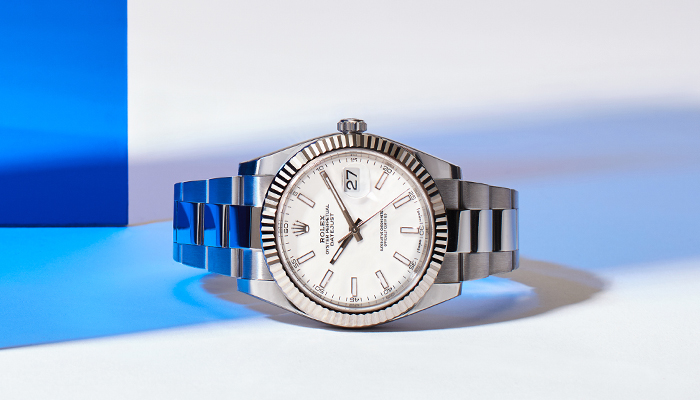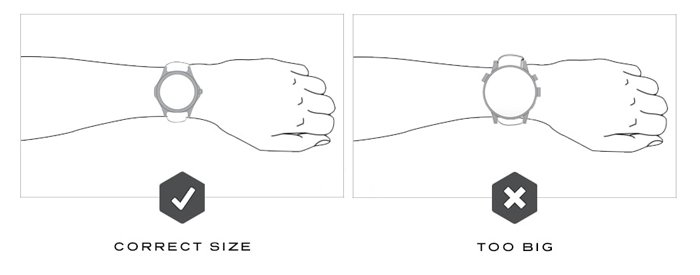What are the Most Common Watch Case Diameters?
As watch trends come and go, so, too, do watch case sizes. Similar to fashions, what is trending as the most common case diameter in one decade can be out of popularity the following decade. Certainly the size of watch cases today differs greatly from the size of watch cases from the 1970s and 1980s, when classical and sportier looks were smaller.
Here we take a look at the most common watch case diameters and provide a few tips to help you find the right case size for the wrist.
But First, a Word About Men’s vs. Women’s and Unisex Watches…
Truth be told, all watches today can be considered unisex. Some brands bill their 34mm to 40mm as unisex to accommodate a wide range of wrist sizes. I say: If you like the watch, go for it!

Today, many women enjoy wearing a watch with a larger case size, projecting a timepiece of substance and character. Gone are the days when women wore watch diameters smaller than 29mm. Personally, even though I do not have a big wrist, I find 36mm to be just too small for me. I like a bold look, so I gravitate to 40mm sizes. But then, watch case diameter is a purely personal choice. Rest assured, watch brands know this, too, and are providing great diversity in terms of case sizes, shapes and styles.
3 Tips to Finding the Right Case Diameter
While your personal style may gravitate towards a larger or smaller case size, here are some key pointers to keep in mind when shopping for a watch to fit comfortably on your wrist:
1. Look at watch case height.
Finding the right case size is often more about the height of a watch than its diameter, especially when the case is rectangular or tonneau (barrel) shaped. The diameter of a watch refers to the case alone; the watch height, however, includes the lugs, too, which, on some styles, can significantly change the watch’s appearance and fit.

2. Pay attention to the lugs.
For comfort and also to protect the watch from scratches and being banged around while on your wrist, the watch lugs (that connect the watch case to the strap or bracelet) should not be larger than the width of your wrist. To learn more about watch lugs and how they should fit on your wrist, check out this blog post.
3. Consider case thickness.
The thickness of the watchcase is an important aesthetic factor. Large, thick cases will naturally look bigger and bulkier, regardless of wrist size. Alternatively, a thin case may look disproportionately dainty or flimsy.
The Most Popular Watch Case Diameters by Style
Here are the case diameters you can expect for different genres of watches.
Everyday Watches
The most common watch sizes for classic, everyday watches range from 42mm to 46mm. These sizes are just generous enough to make a stylish statement without being too bold or over-sized.
Sports Watches
Most often, sport watches range from 40mm to oversized 54mm. Larger wrist sizes can easily handle a 48mm watch, which is often the size of a big sporty diver or pilot watch, on a daily basis.
Dress Watches
Dress watches typically range from 38mm to as much as 46mm and still look elegant on the wrist. It’s most important to look for a size (usually around a 42mm) that sits nicely at the end of a shirtsleeve and is thin enough to slide under a blazer or suit jacket.
Vintage and Pre-Owned Watches
When considering case diameters, there is one thing to keep in mind when buying second-hand watches: the older the watch, typically the smaller the case size will be. Decades ago, case sizes were smaller. Back in the mid 20th century, for instance, the normal case size for men was 36mm to 38mm with some sport watches going slightly larger. The normal case sizes for women were 30mm to 34mm. So, if you like the vintage look, you may have to opt for a slightly smaller case size to be exactly on trend for retro timepieces.
To get a feel for how a certain watch size would look on your wrist, check out our Watch Size Guide here.








